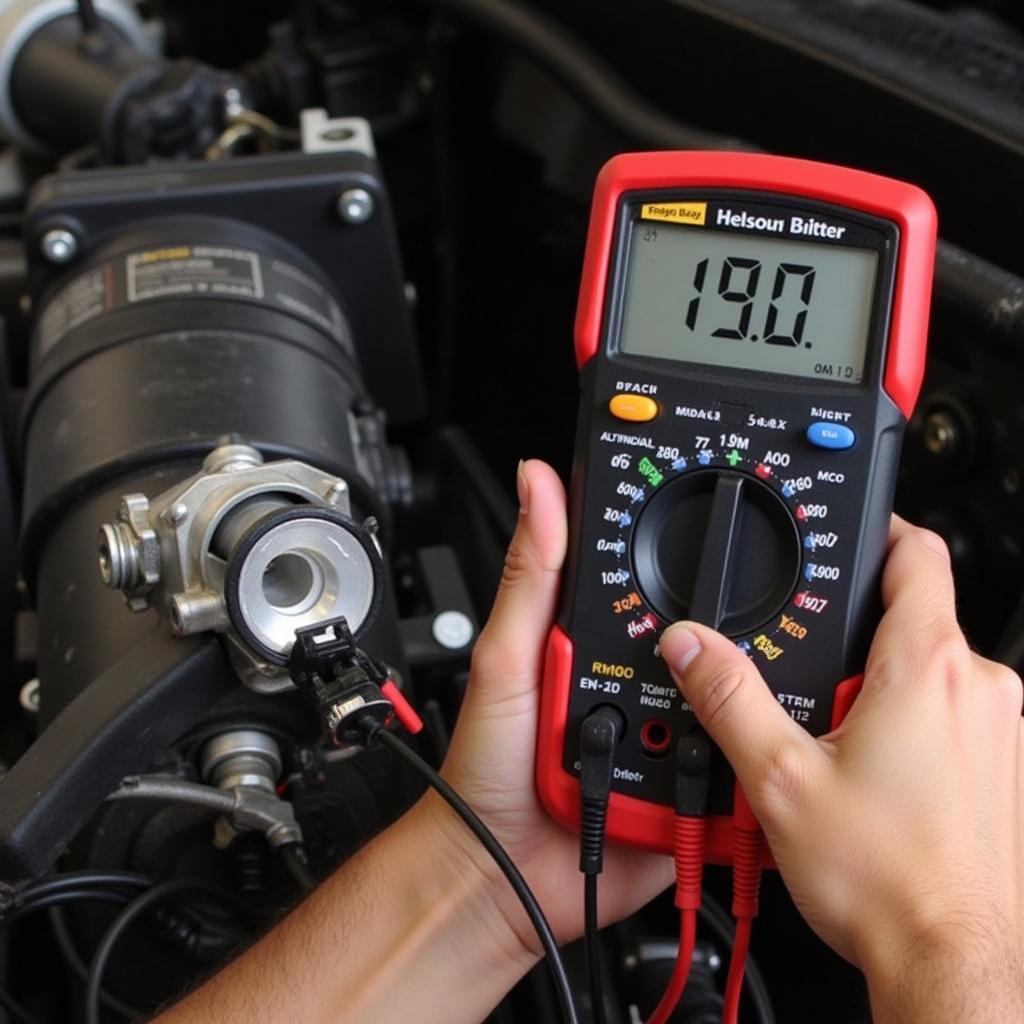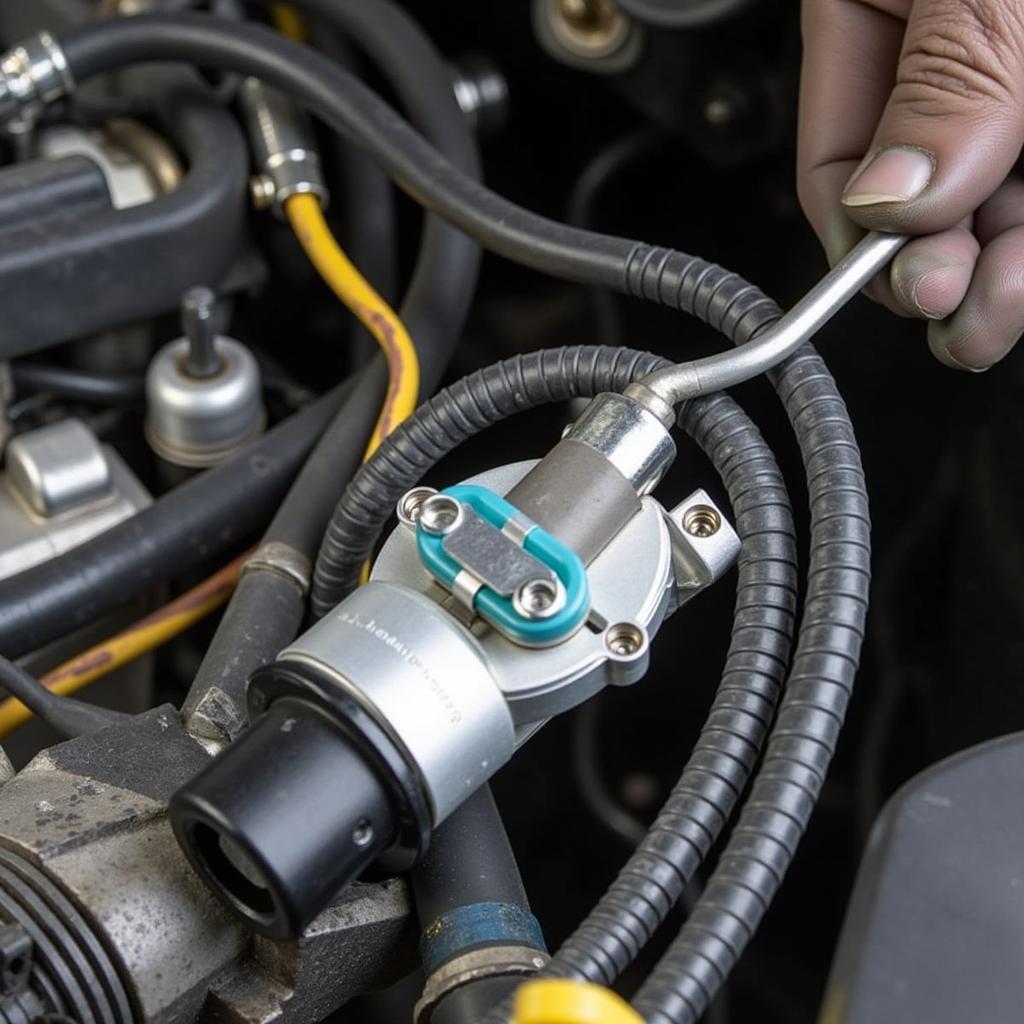Solenoid Problems In Cars can be a real headache. From starting issues to transmission troubles, these small but mighty components can cause a cascade of problems if they malfunction. This guide will delve into the common solenoid issues you might encounter, how to diagnose them, and potential solutions.
Do you struggle with car hard starting problems? A faulty starter solenoid could be the culprit. car hard starting problems are often misdiagnosed, so understanding the role of solenoids is crucial.
Understanding Solenoids: The Unsung Heroes of Your Car
Solenoids are electromagnetic switches that control various systems in your vehicle. They work by using an electric current to create a magnetic field, which then moves a plunger to open or close a valve or switch. Think of them as tiny but powerful gatekeepers, regulating the flow of power or fluids to different parts of your car.
Types of Solenoids in Cars and Their Functions
Several types of solenoids play critical roles in your car’s operation:
- Starter Solenoid: This heavy-duty solenoid engages the starter motor, cranking your engine to life.
- Transmission Solenoid: These solenoids control the flow of transmission fluid, enabling smooth gear shifts. Issues here can lead to clunky shifting or even complete transmission failure.
- EGR Solenoid: The Exhaust Gas Recirculation (EGR) solenoid manages the flow of exhaust gases back into the engine, improving fuel efficiency and reducing emissions.
- Fuel Injector Solenoid: These solenoids precisely control the amount of fuel injected into each cylinder, ensuring optimal combustion.
- AC Compressor Solenoid: This solenoid engages the AC compressor clutch, allowing your air conditioning system to function.
Diagnosing Solenoid Problems: Is it Really the Solenoid?
Pinpointing a solenoid issue can be tricky, as the symptoms often mimic other problems. Here’s a breakdown of common symptoms and how to check if a solenoid is the root cause:
- Clicking Sound When Starting: A clicking sound when you turn the key could indicate a faulty starter solenoid.
- Rough Shifting or Slipping Transmission: If your car struggles to shift gears smoothly or the transmission slips, a transmission solenoid might be at fault. Have you considered cars with the most transmission problems? Understanding common issues can help you narrow down the problem.
- Check Engine Light: The check engine light can illuminate for various reasons, including solenoid malfunctions. A diagnostic scan can reveal specific trouble codes related to solenoids.
- Poor Fuel Economy or Rough Idle: A malfunctioning EGR or fuel injector solenoid can cause poor fuel economy or a rough idle.
- AC Not Working: If your AC isn’t blowing cold air, the AC compressor solenoid could be the culprit.
“A simple multimeter can be your best friend when diagnosing solenoid issues,” advises John Miller, a seasoned automotive electrical engineer. “Checking for continuity and voltage drops across the solenoid can quickly tell you if it’s working correctly.”
 Testing a Transmission Solenoid with a Multimeter
Testing a Transmission Solenoid with a Multimeter
Solving Solenoid Problems: DIY or Professional Help?
Some solenoid problems can be addressed with simple DIY fixes, such as cleaning corroded connections or replacing a blown fuse. However, more complex issues, like replacing a transmission solenoid, often require professional expertise.
Replacing a Faulty Solenoid: A Step-by-Step Guide
- Disconnect the battery: Safety first! Always disconnect the battery before working on any electrical components.
- Locate the solenoid: Consult your car’s repair manual to identify the exact location of the problematic solenoid.
- Disconnect the wiring: Carefully disconnect the wiring harness connected to the solenoid.
- Remove the solenoid: Remove the bolts or screws holding the solenoid in place.
- Install the new solenoid: Install the new solenoid and secure it with the appropriate fasteners.
- Reconnect the wiring: Reconnect the wiring harness to the new solenoid.
- Reconnect the battery: Reconnect the battery and test the system.
do honda cars normally have transmission problems can provide valuable insights if you own a Honda.
 Installing a New EGR Solenoid
Installing a New EGR Solenoid
Conclusion: Keeping Your Solenoids in Check
Solenoid problems in cars, though frustrating, are often diagnosable and fixable. By understanding their functions and common symptoms, you can take proactive steps to address issues before they escalate. Regular maintenance and prompt attention to warning signs can prevent more significant problems down the road. For any automotive electrical issues, feel free to contact us at AutoTipPro. Our phone number is +1 (641) 206-8880 and our office is located at 500 N St Mary’s St, San Antonio, TX 78205, United States.
Are you experiencing issues with your Mercedes Smart car’s transmission? Check out this helpful resource: mercedes smart car transmission problems. Also, ford car problems can be a good starting point if you’re troubleshooting a Ford vehicle.





Leave a Reply